Photographing American Kestrels near the Great Salt Lake during the coldest parts of winter is a two-edged sword. On the one hand the frigid temperatures in December and January make the kestrels “stickier” – much less likely to fly off before you can get close enough for quality photos. But there’s a down side too. Moisture from the lake often forms fog or at least makes the air so incredibly laden with moisture that good lighting often becomes an issue. I’ll still take the shot under some of those conditions though – a close-up with the bird large enough to very nearly fill the frame is still usually much more desirable than a well-lit bird so small in the frame that little detail can be seen.
2000, f/7.1, ISO 400, 500 f/4, 1.4 tc
In this image the background is snow and there had been a blizzard the day before which had stacked snow up on one side of the perch. This was one of the first times I’d ever been close enough to a kestrel to get a frame-filling image and I well remember having a case of “buck fever” while photographing him at such close range. Also a bit unusual was the fact that I was actually looking slightly down at him – something that doesn’t happen often with kestrels.
1600, f/7.1, ISO 500, 500 f/4, 1.4 tc
This shot illustrates well what you get when the atmosphere is so laden with moisture when it’s very cold – fog, low but even light, some reduction in detail and sometimes very interesting perches from all the hoar-frost those conditions produce. I liked the sort of lopsided, off-kilter pose this kestrel gave me.
1000, f/10, ISO 400, 500 f/4, 1.4 tc
Occasionally there’s no snow on the ground but the heavy frost from the night before can add some interesting touches to an image. Here, frost can be seen on the post and on some of the out of focus background vegetation. This photo illustrates an interesting adaptation of kestrels to the cold – in my experience kestrels usually reject the tail of their vole prey. But I’ve seen them eat the tail several times and in each case it was bitterly cold. It’s my working theory that their very high demand for warming food in winter causes them to consume every bit of protein they possibly can. And it’s a real struggle to swallow the tail. This bird had mostly swallowed the tail once (with only the tip of it sticking out of its beak) but then had to cough it up and start over. The second time he did get it down – and keep it down.
1000, f/8, ISO 500, 500 f/4, 1.4 tc
I’ve always liked this shot for several reasons. I enjoy the snow/frost on the perch and the soft lighting. There’s also some things going on here that may not be apparent at first glance. The kestrel is undecided about sticking around with me as close as I am, as you can see by the slightly raised position of the left wing (in anticipation of taking off which it did not do) and the tentative way he is holding the vole with it hanging down on the back side of the perch. And you’ll notice that the vole is still alive with eyes open and I even got a catch light in its left eye.
3200, f/7.1, ISO 400, 500 f/4, 1.4 tc
This is another example of the hoar-frost adding interesting components to an image. At times the frost can be so thick on virtually everything in the area that almost anything the bird might choose to land on would be transformed to an interesting perch.
1600, f/8, ISO 500, 500 f/4, 1.4 tc
Just recently I found this cooperative male nestled down in the snow on top of some rabbitbrush. While it’s a less traditional rear view of the bird I liked the colors and the snowy perch.
1250, f/7.1, ISO 250, 500 f/4, 1.4 tc
This photo was taken on a bitterly cold morning and I don’t think I’ve ever seen the facial plumage fluffed this much on a kestrel – even under the eye. Perhaps the feathers were a little wet (though I don’t really think so) to give them this unusual rough texture. This frosty snag has been a favorite kestrel perch over the years.
Kestrels are often a photographic challenge in the snow but I typically like the setting the snow or frost can provide.
Ron


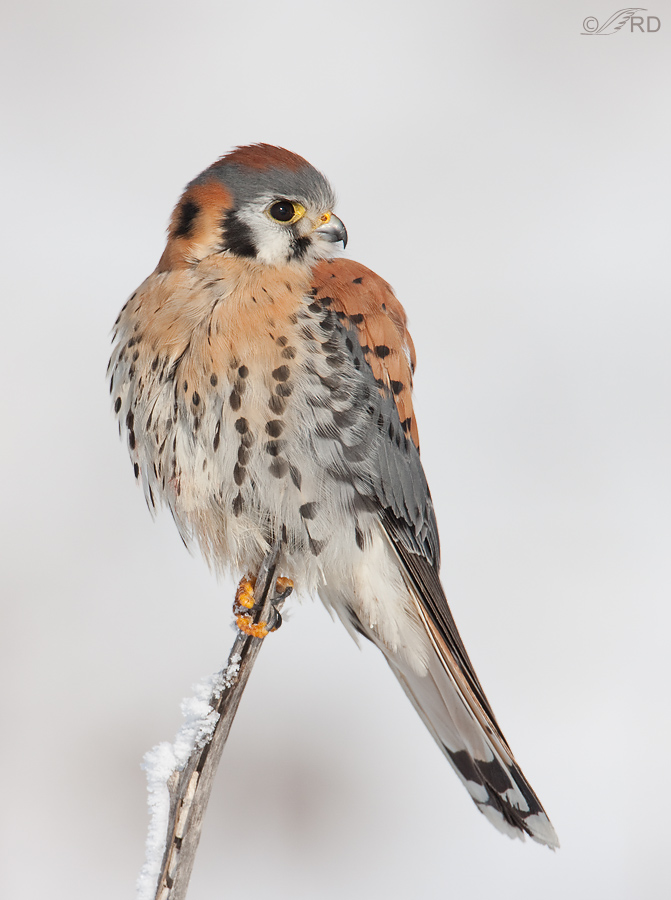
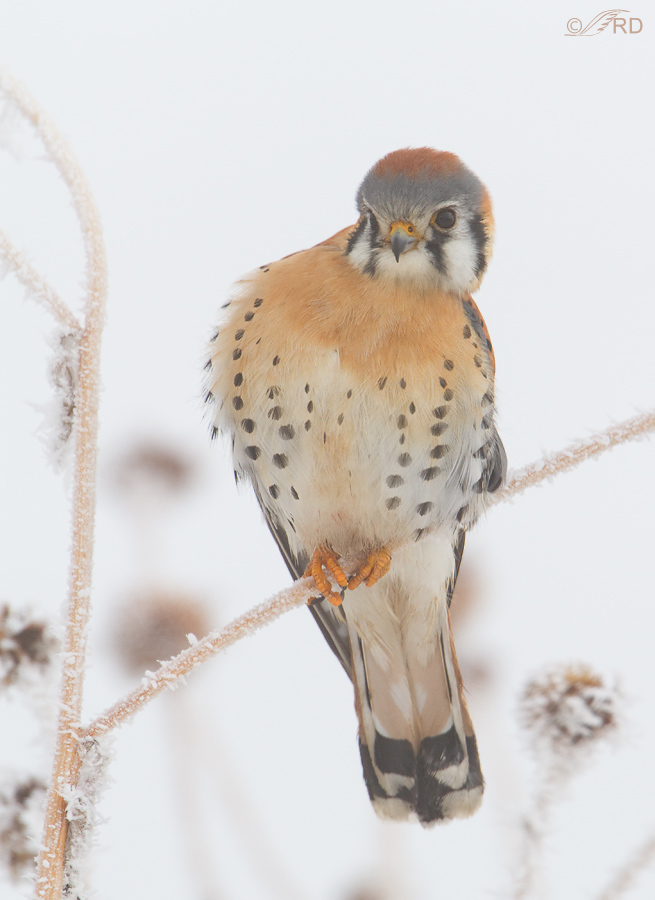
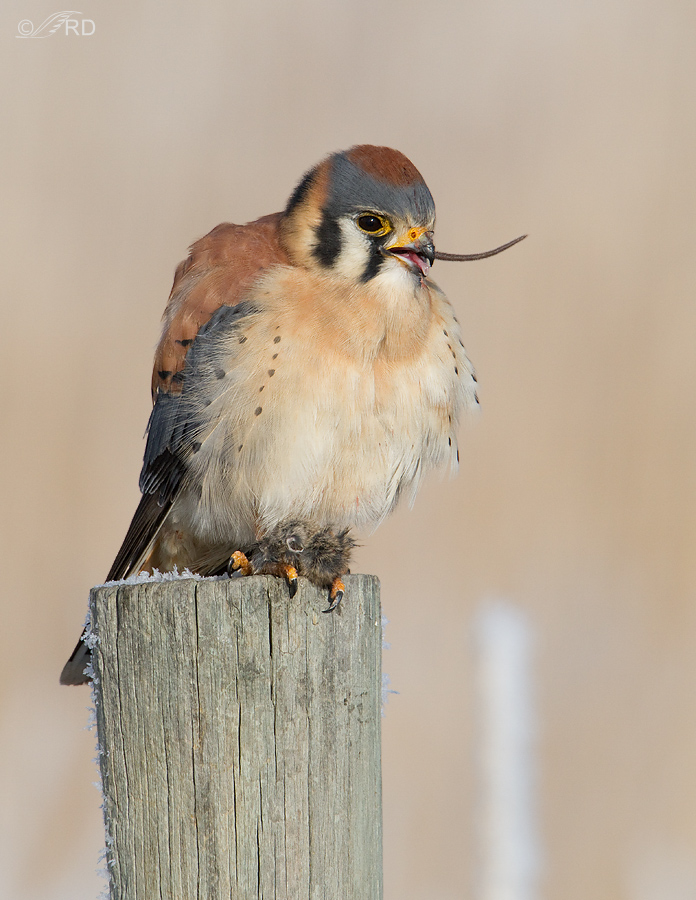

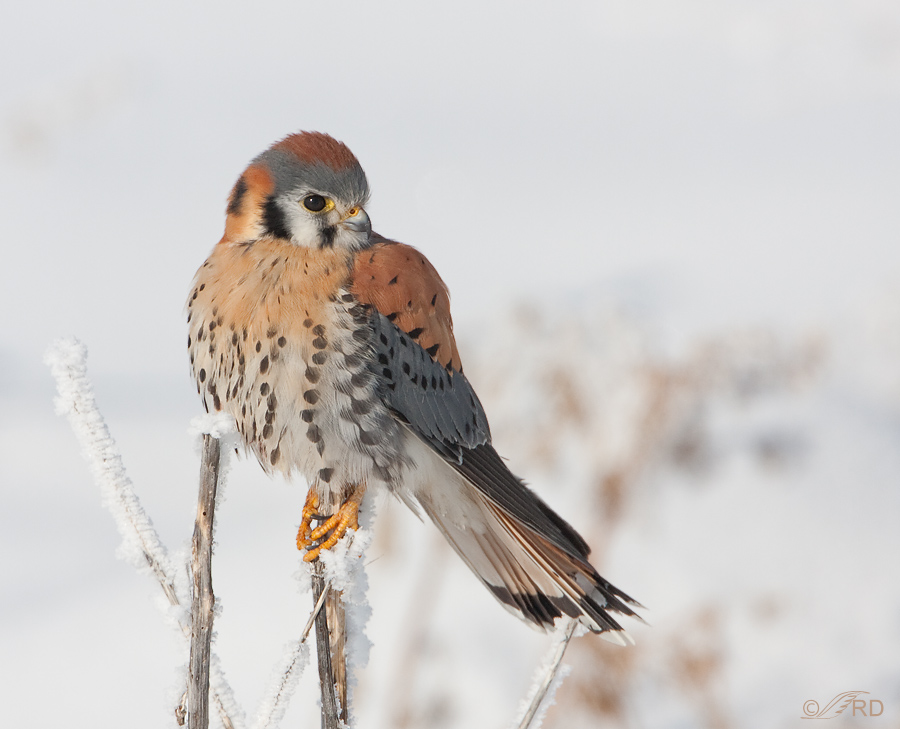

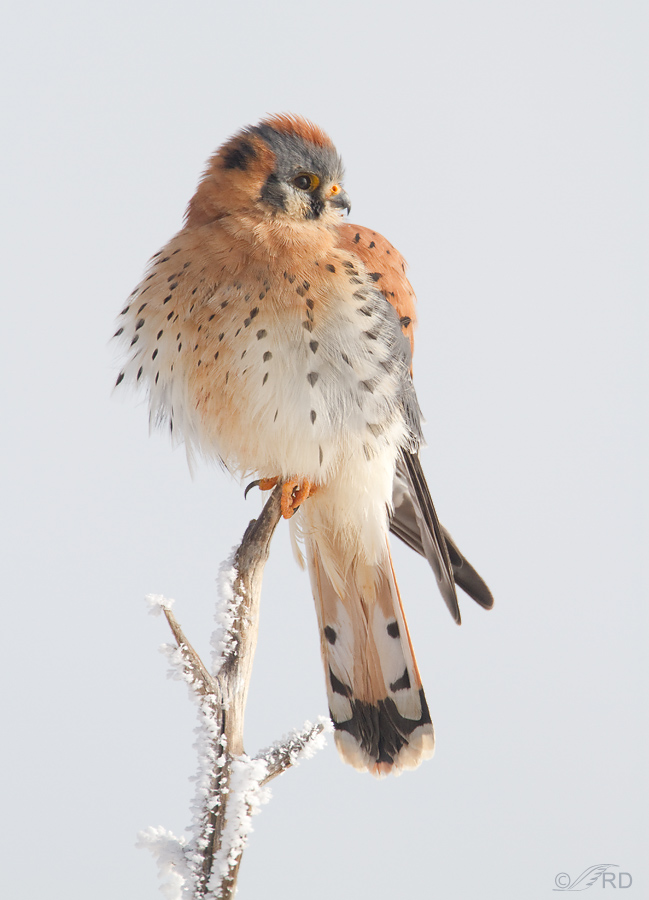
Beautiful. Kestrels are only here in the summer (Northern Alberta, Canada) so to see their vibrant colour with a snowy background is stunning.
Beautiful!! I was able to get close one day and spotted one eating a mouse. They love to perch, but are quick to being creeped.
What a wonderful collection of photos of this dramatic bird. Thank you.
Amazing shots!
Thank you Hector. I appreciate the nice comment.
Fantastic shots, Ron. This is one of my favorite small hawks. They are so feisty and beautiful, too. Thanks for sharing these.
Thanks Bob. And you sure got the “feisty” part right!
Gorgeous!!!
Thank you Robert. I had some gorgeous (handsome) subjects.